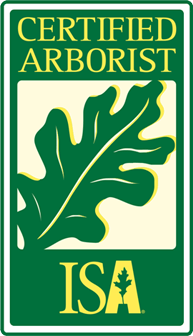CALL US TODAY!
Understanding Tree Terms: A Comprehensive Tree Glossary
Air Spading
An air-spade is a handheld tool that produces a stream of supersonic air moving at a speed of Mach 2. While the air stream is powerful, its harmless to non-porous objects such as plant roots, buried pipes or cables. Using an air-spade helps us to clear compacted soil and debris from the root flare without causing damage to the trunk or root system.
Arboriculture
The cultivation, management, and study of individual trees, shrubs, vines, and other perennial woody plants.
Arborist (Noun)
A tree surgeon. A professional in the practice of arboriculture. It takes a long time to become a surgeon of any kind. Much hard work, dedication and knowledge is required to be able to don the title of professional certified arborist. At TH we take great pride in having such individuals on staff and support those whom are interested in honing their skills and achieving their own certification, through hands-on training, ongoing education and professional development courses.
Biological Practices
The control of a pest by the introduction of natural enemy or predator.
Biological control or biocontrol is a method of controlling pests such as insects, mites, weeds and plant diseases using other organisms. It relies on predation, parasitism, herbivory, or other natural mechanisms, but typically also involves an active human management role.
Codominant
A term used to describe 2 or more main stems (or “leaders”) that are about the same diameter and emerge from the same location on the main trunk. Codominant stems tend to fail much more frequently than others, especially in storms. While two stems may look fine to a casual viewer, they may actually be dangerous and expose your tree to failure.
Cultural Practices
Modalities or techniques such as selection, planting, mulching, training fertilization, pest and pathogen control, pruning, shaping, and removal used in arboriculture.
Fell, as in ‘To Fell a Tree’ or ‘Previously Felled’
Fell, past tense of fall. In arboriculture, fell means to cut down. Felled means the tree has already fallen, whether on its own, or by a person.
Girdling Roots
Lateral roots that emerge at or slightly below the soil surface and cut into at least one side of the main trunk. These roots restrict the movement of water and nutrients to the leaves as they put pressure on the trunk.
Heading Cut
A type of pruning cut that A). Prunes a shoot no more than 2 years old back to a bud. B). Cuts through an older stem back to a lateral branch less than 1/3 the diameter of a cut stem. C). Cuts a stem to an indiscriminate length.
Heading cuts are not typically appropriate except in response to storm damage or other extreme situations.
Integrated Pest Management (IPM)
A process you can use to solve pest problems while minimizing risks to people and the environment. IPM can be used to manage all kinds of pests anywhere-in urban, agricultural, and wildland or natural areas. IPM is an ecosystem-based strategy that focuses on long-term prevention of pests or their damage through a combination of techniques such as biological control, habitat manipulation, modification of cultural practices, and use of resistant varieties. Pesticides are used only after monitoring indicates they are needed according to established guidelines, and treatments are made with the goal of removing only the target organism. Pest control materials are selected and applied in a manner that minimizes risks to human health, beneficial and nontarget organisms, and the environment.
Leader
A shoot of a plant or tree at the apex of a stem or main branch.
Microclimate
The climate of a very small or restricted area, especially when this differs from the climate of the surrounding area.
Plant Health Care (PHC)
A holistic approach to plant care that focuses on the health and growth of the plant. Developed by the International Society of Arboriculture, the Tree Care Association and the USDA Forest Service, PHC is the proactive approach to maintaining tree, shrub, and groundcover health through holistic cultural management and integrated treatments. The goal of a good PHC program is to maintain tree and shrub health by increasing awareness about proper growing environments for the plant – (Wrong Plant, Wrong Place). Health, vigor and livelihood can be achieved through preventative care for stress management, frequent monitoring, early detection of problems, informed decision making and integrated treatments which provide long-term solutions.
By implementing services like Plant Health Care, we are able to continue to support our dedication to the preservation of trees and our eco-system.
Pruning
A horticultural and silvicultural practice involving the selective removal of certain parts of a plant, such as branches, buds, or roots. By cutting away dead, overgrown branches or stems we can increase fruitfulness, growth and overall tree health.
Reduction Pruning
The selective removal of branches and stems to reduce the height and/or spread of a tree. This type of pruning should be done when there is a need to minimize risk of failure of a tree, or reduce interference onto nearby buildings or other structures.
Structural Pruning
The removal or reduction of the length of stems that compete with the leader. Also increases structural integrity and encourages health and long life.
Have you ever noticed how trees in the forest grow straight up through the canopy, towards the sun, with one main stem with almost perfect trunks taper? Now, think about the trees in your landscape…Are they the same or do they stretch out wide with many branches and limbs? Do they have more than one stem? Trees growing alone or outside of a cluster, with no competing neighbors, have better access to sunlight. While this may create a magnificent looking tree, these wild or ample branches and limbs can pose risk to a tree’s stability, putting unnecessary strain on a tree, affecting its balance and eventually posing a hazardous risk. Poor tree structure often results in breakage of major limbs and contributes to overall tree failure. As a tree matures, if left untreated, the damage can be significant. Structural pruning helps to stabilize a tree, ensure its longevity and minimize potential damage risks.
Root Collar Excavation
As Arborists, we often encounter trees that have been planted incorrectly, have excessive amounts of mulch piled onto their trunks or have had the soil around them compacted due to construction or excessive foot traffic.
In all of these cases the tree’s health will be negatively impacted due to the loss of pore space resulting in disruption of nutrient flow in the root system. This lack of nutrient uptake stresses the tree, and if left unchecked could result in girdling roots, pest and disease infestation, or death.
When preforming a Root Collar Excavation, we use an Air Spade to help loosen soil, decrease compaction, make way for root pruning if necessary, and add missing organic material and nutrients back into the soil, invigorating the tree and increasing its health and sustainability.
Root Flare
The area around the base of the trunk where support roots emerge, providing that nice curve. If it’s damaged or doesn’t develop properly, your tree can become unstable and hazardous.
Thinning
A more drastic form of pruning, a thinning out cut is the removal of an entire shoot, limb, or branch at its point of origin. This is usually employed to revitalize a plant by removing over-mature, weak, problematic, and excessive growths.
Topping
The unacceptable pruning practice of reducing the height or spread of a tree using heading cuts. Heading cuts reduce the trunk or branches of a tree to stubs or to lateral branches too small to assume the terminal role of the branch being cut. In spite of providing short-term control of tree size, topping causes serious future problems such as; 1). Producing a flush of new growth at the heading cut, destroying the trees natural beauty and habit. This extra production of foliage can require more extensive pruning or maintenance, 2). The sprouts can produce a foliage shell, shading the trees interior and causing branches to die back, thus making them more prone to damage and breakage.
Topping is a practice you will never observe at Tree Huggerz, Inc. and you should avoid any company willing to participate in this method.
Trunk/Tree Taper
Tree taper is the degree to which a tree’s stem or bole decreases in diameter as a function of height above ground. Trees with a high degree of taper are said to have poor form, while those with low taper have good form. Trunk taper helps to assure a durable structure that is much stronger and less likely to fail as the tree matures. Lower branches are important in the development of good trunk taper. Root development and tree establishment is enhanced by lower branches. Trees with lower branching will establish more quickly.
Union (Crotch)
The junction between stem and branch or between stems.
Need more help understanding your trees or learning about our tree services? Call us at 610-606-1228.
Quick Links
contact information
Phone:
Email:
Office Address:
8840 Gap Newport Pike
Avondale, PA 19350
Mailing Address:
PO Box 715, Hockessin DE 19707
ISA-Certified Arborist: PD-2134A
PA/DE: Certified Commercial Pesticide Applicator
BUSINESS HOURS
Office Hours:
Mon - Sat: 8:00 am – 6:00 pm
Sun: Closed
24/7 Emergency Service is Available!


